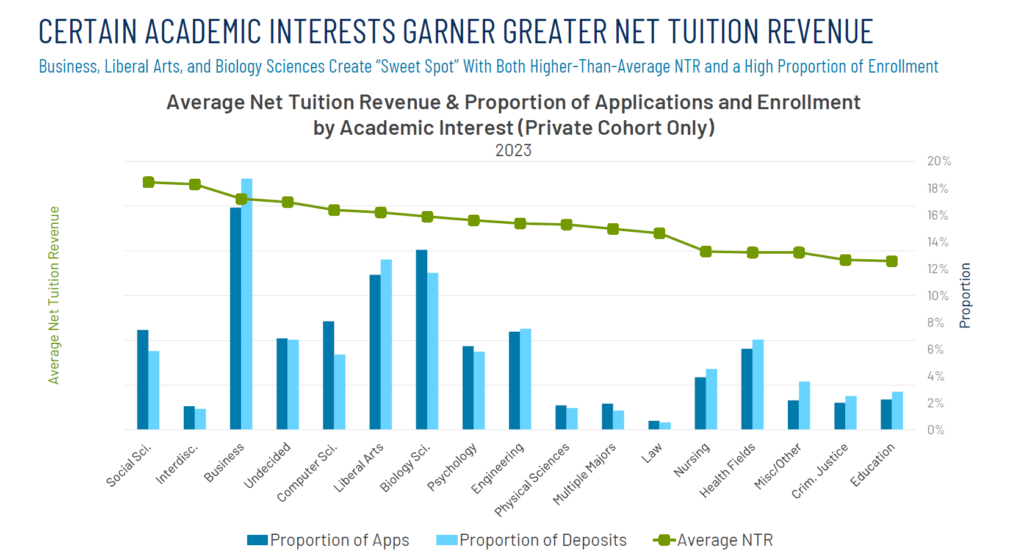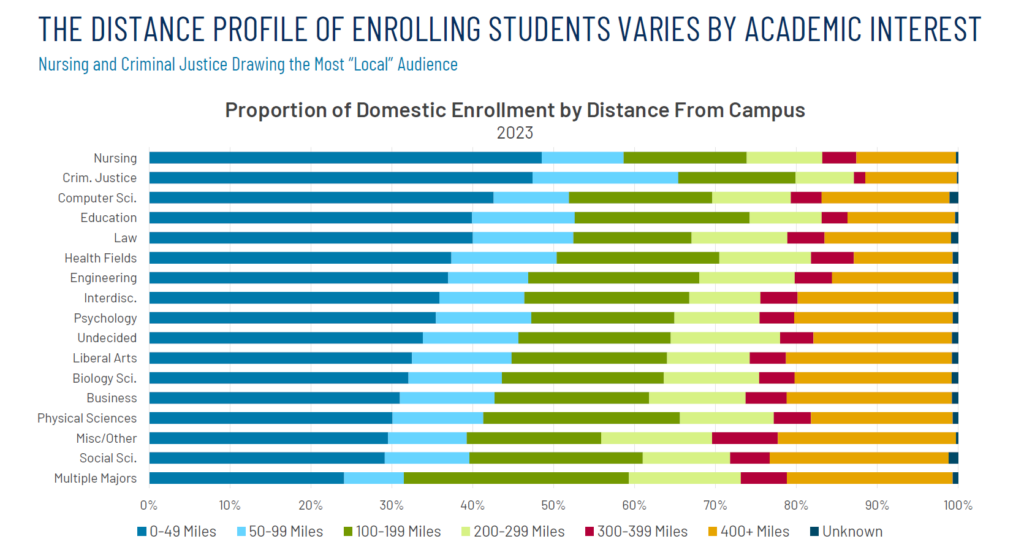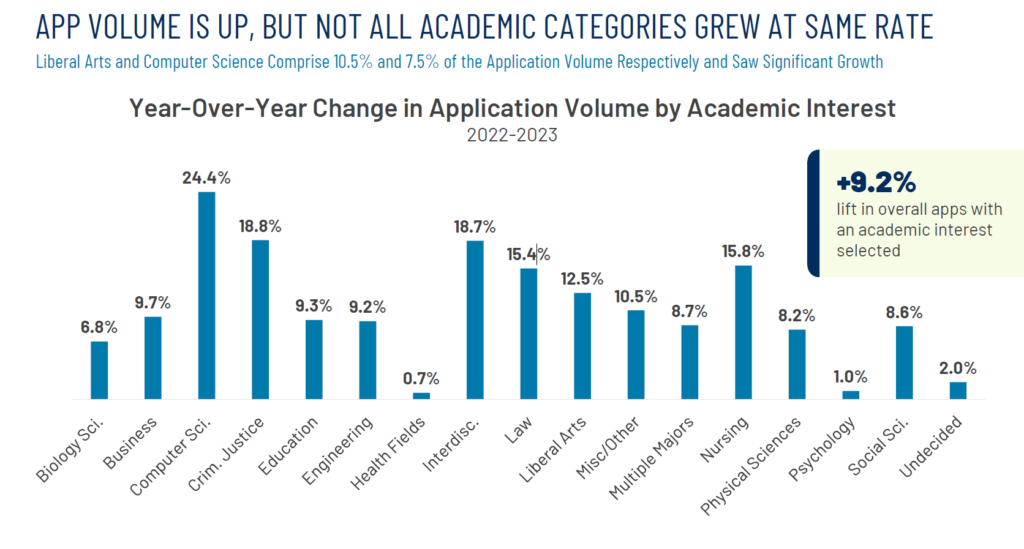We recently announced the addition of Academic Interest data in the MARKETview platform after analyzing and standardizing major data from over 130 partners into 17 distinct categories.
This new feature allows our partners to analyze and compare their school’s proportion of applications, year-over-year application volume, proportion of net deposits, and yield trends through the lens of academic interest, relative to their peers and the national market.
It’s another way to identify the elements most critical to our partners’ success that we need to measure to help them reach their goals. The MARKETview team presented our initial findings from this new report in a webinar on September 27.
Below are some of the key trends we are seeing from what major students choose when they submit an application and what that means for our partner institutions:
1. Certain Academic Interests Garner Greater Net Tuition Revenue
For 2023, among all 17 academic interest categories, some tend to pull in much more net tuition revenue (NTR) than others. Business, Social Sciences, and Interdisciplinary majors have both a high proportion of deposits and a higher-than-average NTR. On the other end of the spectrum, Criminal Justice, Education, and Health Fields are lower in both average NTR and deposits. This is neither an encouraging nor discouraging trend, rather it helps our partners understand the array of interests that their students have.

2. The Distance Profile of Enrolling Students Varies by Academic Interest
Academic interest also varies considerably depending on how far the student wants to travel to school. Among students who wanted to stay closer to home (99 miles or less), Nursing (58.6%), Criminal Justice (65.4%), Computer Science (51.9%), and Education (52.6%) tended to attract a higher proportion of interest.
Conversely, there were fewer students who stayed closer to home (99 miles or less) who were interested in Multiple Majors (31.5%), Social Sciences (39.6%), Misc/other (39.2%), and Physical Sciences (41.3%). Ultimately, this new ability to analyze geographic data in combination with academic interest data is helpful for admissions teams to understand the students who comprise each major so they can market accordingly.

3. App Volume Is Up, but Not All Academic Categories Grew at the Same Rate
Across the board, application volume of students with an academic interest selected was up +9.2% from last year. This increase was not felt by all majors equally. Computer Science (+24.4%), Criminal Justice (+18.8%), Interdisciplinary (+18.7%), and Nursing (+15.8%) experienced the most growth while Health Fields (+0.7%) and Psychology (+1.0%) remained flat. Again, we will continue to monitor these trends in future cycles to understand how much of this change in academic interest is likely a function of post-pandemic reset or a signal of students’ evolving interest in these fields of study.

Request the Recording
New Insights on Student Academic Interests:
Propel Your Institution Forward With the Latest Data

Academic programming is both an institutional resource issue and an enrollment one – and the landscape is rapidly changing. By leveraging MARKETview’s hot-off-the-press student data from more than 130 institutions nationwide, you’ll gain longitudinal and real-time vision into how student academic interests are evolving.
